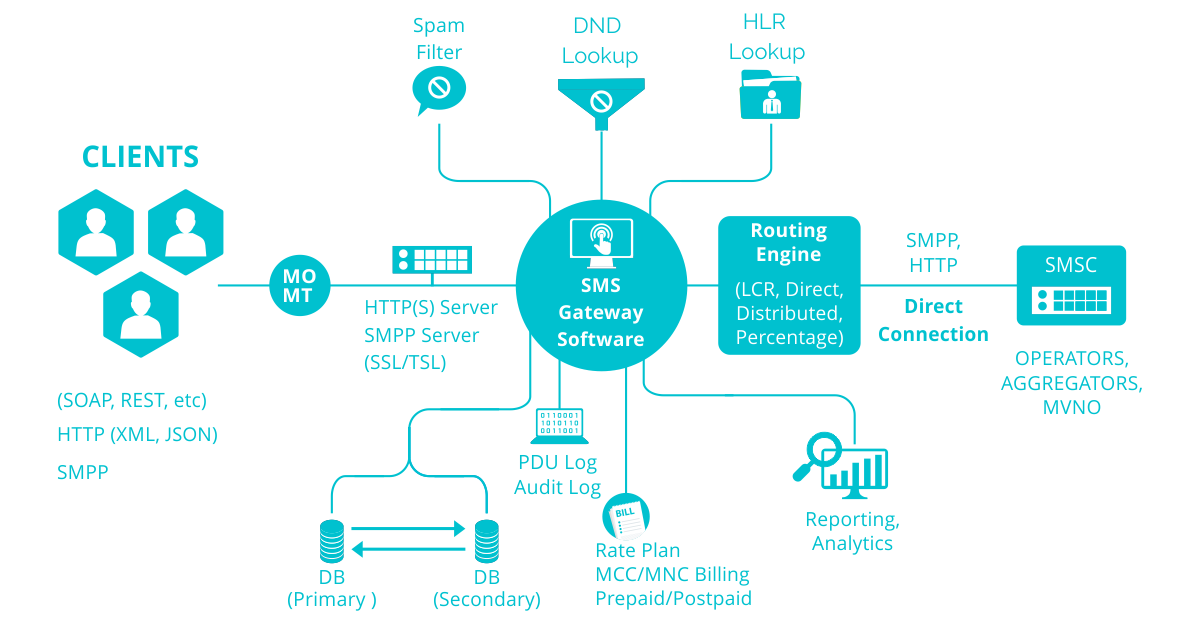Connectivity for your Bulk SMS Application (SMPP Connectivity) Hamara
SMPP stands for Short Message Peer to Peer Protocol
Extend industry-standard, SMPP connectivity to your partners and facilitate them to connect their ESME to your SMPP Server. SMPP Interface is becoing a de-facto choice for new age enterprises. Our Robost SMPP Engine take Care of Rationalized TPS, IP Security and SYn Flooding. Addional ad ons such a custom DND lookup, MNP Dio & HLR DIP Can be intergrared with your SMPP Server without any Hassle. No Technical expertise is required.

SMPP (Short Message Peer to Peer) is a protocol used in the telecommunication industry for sending & receiving SMS ( Short Message Services) Message Between application and short message services center (SMSCs).
SMPP operates on a client-server model, where the client (known as an ESME - External Short Messaging Entity) sends messages to the server (SMSC) for delivery to mobile devices. The protocol defines a set of commands and responses for various operations, such as submitting messages, querying message status, and receiving delivery reports.
This is the server-side component that receives messages from ESMEs, routes them to the appropriate destination, and delivers them to the mobile network.
This is the client-side component that connects to the SMPP server to submit messages, retrieve delivery reports, and perform other operations. The client can be an application or a messaging platform.
A reliable network connection is required between the SMPP client and server. This can be a dedicated network link or an internet connection, depending on the deployment scenario.
The SMPP client needs to establish a connection with the server by performing a bind operation. There are different bind types, such as Bind Transmitter (for sending messages), Bind Receiver (for receiving messages), and Bind Transceiver (for both sending and receiving).
During the bind operation, the client and server exchange parameters like system ID, password, system type, and address range. These parameters define the capabilities and permissions of the client within the SMPP network.
SMPP connectivity can be secured using various mechanisms like IP whitelisting, VPN (Virtual Private Network), or TLS (Transport Layer Security) encryption, depending on the level of security required.
Once the SMPP connection is established, the ESME can submit messages to the SMSC by sending appropriate commands. The SMSC processes the messages, performs necessary routing, and delivers them to the intended recipients. Delivery reports and other notifications can also be received through the SMPP connection. It's important to note that SMPP is a specific protocol used for SMS messaging, and its implementation and configuration details may vary between different SMSC vendors and service providers.
Create a Free Account ,
Call +91-8000-000-264 , 94645-36470 ,Email : info@gkwebdevelopers.com